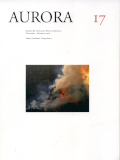Unseen Whiteness
DOI:
https://doi.org/10.1344/Aurora2016.17.5Keywords:
María Zambrano, Ibn al-‘Arabî, Stéphane Mallarmé, Rainer Maria Rilke, Robert BressonAbstract
To paraphrase Jacques Derrida’s reading of Mallarmé’s whitenesses, we might argue that in María Zambrano’s works as a whole “The ‘whitenesses’ do indeed gather importance”. At the highest level of the spiritual seeker’s inner journey, Ibn al-‘Arabî observes, symbols are reduced to nothing when we draw close to the inevident presence of the Silent, the non-abode (maqâm lâ maqâm, the “station of no station”), the presence of uncreated light. María Zambrano practises a metaphysics of whiteness (“the quête for whiteness”) from the “original source” of the invisible. This resembles the “light of the invisible” (nûr al-ghayb) or apophatic light which, according to Ibn al-‘Arabî, demands the “annihilation” of the witness; and Zambrano also demands that death should precede visionary perception: the “unseen whiteness” or the “invisible whiteness” which is the image of the non-image she uses to refer to the light of the absolute. Finally, note that cinema (Dreyer, Bresson, Duras, etc.) has also transformed this light without image into photosensitive material.
Downloads
Published
How to Cite
Issue
Section
License
The authors who publish in this journal agree to the following terms:
- Authors retain copyright and grant the journal the right of first publication.
- Texts will be published under a Creative Commons Attribution License that allows others to share the work, provided they include an acknowledgement of the work’s authorship, its initial publication in this journal and the terms of the license.



